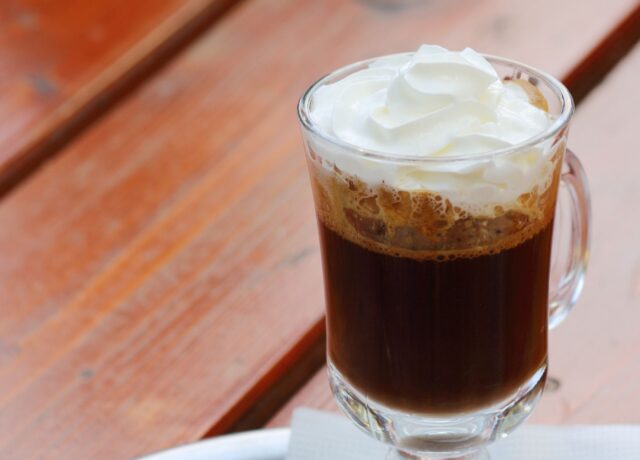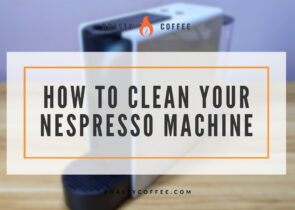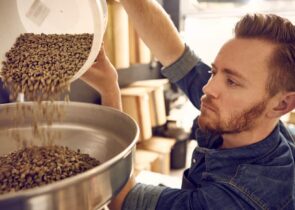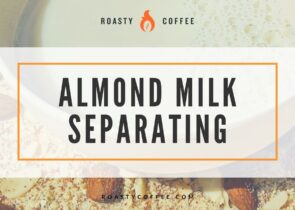Pour over and drip coffee brew coffee in a similar way. So how are they different and do those differences matter? I was blown away by my first pour over coffee more than a decade ago, and it’s been my go-to method ever since.
Where does that leave the venerable drip coffee maker? Well, I’ve had great auto-drip too, so sometimes the convenience factor makes it worth it for some people. There’s no denying that both methods continue to be popular both at home and in commercial cafes.
Read on to find out more about these brewing methods and how you can master them.
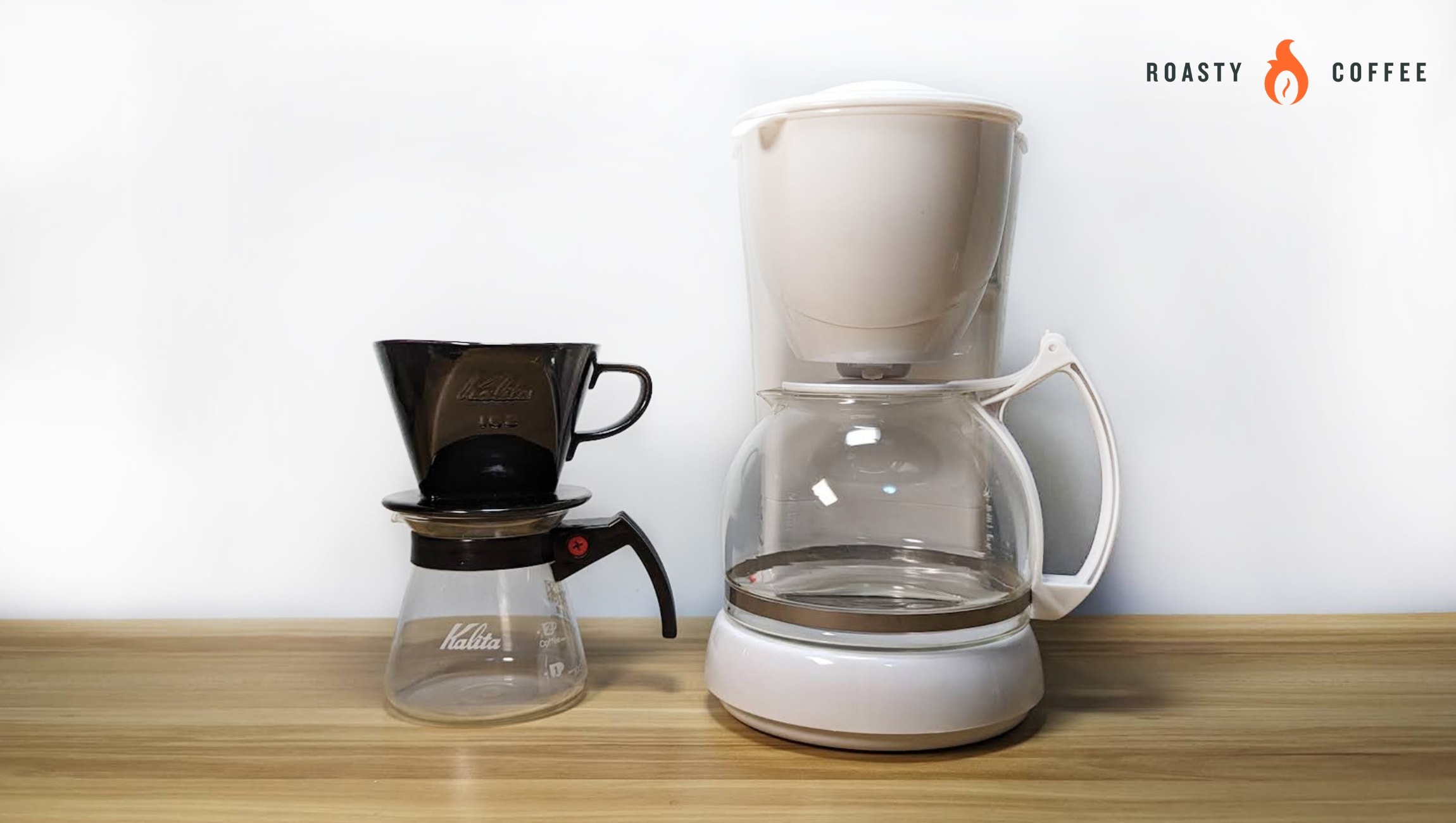
Key Takeaways
- Pour over brewing is a hands-on method that can extract more nuanced flavors, ideal for those who enjoy the craft of coffee making.
- Drip coffee machines provide a no-fuss brewing experience, perfect for busy lifestyles without compromising on taste.
- Equipment needs differ: Pour over methods require additional tools like a kettle and server, while drip coffee makers are all-inclusive.
What Is Pour Over Coffee?
The pour over has been around for a long time now but has recently resurfaced in popularity as a result of the third wave of coffee. Due to its intricate brewing process and efficient extraction ability, coffee lovers have been revisiting the pour over due to its simple yet vibrant brew results.
The Beginning of the Pour Over
Though people have been brewing coffee for centuries, the practice of it was propelled by a woman named Melitta Bentz. Before the early 1900s, many coffee makers never thoroughly prevented coffee grounds from getting into brewed coffee. Though there were cloth/linen filters available, they were difficult to clean and maintain–until Bentz invented the paper filter in 1908.
Using blotting paper from her son’s school book, she attempted to brew coffee with it–and succeeded. Since many coffee brewing methods rely on filters of some kind, she aided in the innovation of the pour over brewing method through her creation of paper coffee filters.
Why People Prefer Pour Overs
A significant reason many baristas enjoy the pour over method is that it allows you complete control over the brewing process. Baristas control the flavor extraction process by monitoring the even and thorough saturation of the grounds. And not only is it delicious to sip, but it’s also fun to make.
Many coffee lovers, especially those who are partial to black coffee, prefer the pour over method. Since it’s usually a longer and more controlled brewing process, the potential for a quality cup is much higher. The slower the water filters through the grounds, the more flavor is extracted. In an ideal scenario, this means a more flavorful cup.
What Is Drip Coffee?
In many American homes today, one of the most common appliances that you’re bound to see is an electric drip coffee maker. Though coffee can be made through many different vessels using the “drip” method when referring to drip coffee most connoisseurs are talking about coffee brewed through electric drip coffee makers.
The Beginning of Drip Coffee
Bentz’s invention not only helped fuel the practice of the pour over method, but it also helped support the innovation of the electric drip coffee maker later on in the 20th century. The first electric drip coffee maker, the Wigomat, was invented in Germany in 1954 by Gottlob Widmann. Up until the 1950s, coffee was normally brewed using a percolator, Moka Pot, or by the pour over method.
However, the usage of disposable filters made it easier and more efficient to brew drip coffee. It allowed coffee drinkers to brew coffee more frequently since the filters were disposable. All of these factors made electric coffee makers more prevalent in many American homes.
Why Many Drinkers Like Drip Coffee
Electric drip coffee makers grew rapidly in popularity throughout the 20th century due to their efficiency in the 9-5 working lifestyle. After the 1970s, electric drip coffee makers all but completely replaced the previous usage of percolators in many American homes.
The efficiency that the electric drip coffee maker provides is arguably the most intriguing characteristic of the drip coffee brewing process. The machine controls the entire brewing process for you, and the only work required for the brewer is pouring water into the reservoir and coffee grounds inside the filter.
How to Brew
Now, let’s learn how to do the brews, shall we?
How To Make the Perfect Pour Over
You can brew a pour over by placing a filter and coffee grounds in a funnel and then placing the funnel over a carafe or designated coffee mug. There are many pour over stands that have these pieces, and there are also other devices like the Chemex that are designed especially for the pour over process.
The brewing process is a lot more hands-on than drip coffee brewing because you’re completely controlling the coffee-extraction process. The pour over method relies on timed pouring intervals to get a balanced flavor extraction. After you pour a certain amount of water in a circular motion for a few seconds, the grounds will begin to rise and “bloom,” releasing the gasses and flavor inside the grounds. We’ve attached a guide below that explains what this looks like.
The Drip Coffee How-To-Do
Drip coffee is brewed through the machine itself pulling cold filtered water out of a reservoir and using a combination of heat and pressure to warm the water and siphon it up through the machine. After this, the hot water is filtered down through the grounds.
This is how the extraction process takes place. From there, the freshly brewed coffee makes its way through the paper filter and into the carafe. After you’ve finished brewing, you have a delicious pot of black coffee to sip on throughout the day!
Common Differences
Though they are both great ways to brew coffee, there are some important differences and distinctions between them that should be recognized. Here are some of the most common ones.
Flavor
Due to the differences in brewing methods, pour overs tend to have more flavor than regular drip coffee. Since the brewing process typically takes longer, the flavor tends to be more vibrant. This is because the water has more time to pull the flavors and oils from the grounds.
Though both can be tasty, drip coffee can fall short in comparison to the vivid flavor of pour over coffee. It’s still strong and bold in flavor, but it’s still tasty and savory. The coffee is well-bodied and has a simple, yet smooth and savory flavor.
Control
Pour over coffee is all about maintaining control over the brewing process. The barista controls the saturation of the grounds, water flow, and how long the brewing process is overall. Therefore, it’s important to make sure you complete the brewing process correctly so the grounds aren’t under-extracted or over-extracted.
Equipment
Both drip coffee brewing and pour overs require certain equipment. Luckily for the drip coffee method, the only equipment you’ll need is an electric drip coffee brewer. Since it does all of the brewing for you, all you need is the machine itself.
However, for pour overs, there are several options you can choose from. Pour overs can be made with pour over cup stands like the Bee House Ceramic Coffee Dripper, Hario V60 Ceramic Coffee Dripper, and the Mecraft Ceramic Coffee Dripper. If you’re looking for something bigger and sturdier, then a Chemex is a simple and easy way to brew a pour-over, and it uses the same method.
Cold Brewing
Not in the mood for hot coffee? Cold brew is the perfect cure for your problem. Unfortunately, drip coffee is not the best at making cold brew as it only makes hot coffee. Though hot drip coffee can cool off over time, it’s not the best to store over time in a cool setting. This alters the flavor, and the coffee will begin to taste sour over time.
However, cold-brew lovers can easily make cold brew through the pour over method. Since you don’t necessarily have to heat the water to filter it through using the pour-over method, you can immerse the grounds in cold water, cool it for several hours, and slowly pour it through a Chemex.
| Drip Coffee | Pourover Coffee | |
|---|---|---|
| Brew Flavor Quality | Varies widely | High-quality and flavorful with proper technique |
| Brew Time | Quick and efficient, especially when brewing large amounts | Longer brew time, but can extract more flavor |
| Brew Difficulty and Control | Less control, but less work too. Most models will brew at the push of a button. | Many variables to consider, but gives you precise control over each brew |
| Setup | The only equipment needed is the machine itself, and maybe a coffee grinder | You need stuff like a pouring kettle, a server, and some optional doodads to maximize your brew |
| Cold Brew? | No practical way to make cold brew | Good at filtering grounds immersed in water overnight (in a pinch!) |
Wrapping Up
Ultimately, both methods of brewing will suffice to give you a robust, delicious cup of coffee. Whatever qualities you’re looking for in a cup of coffee (flavor, brewing time, difficulty) will determine which brewing method is best suited for you.
Happy Caffeinating!





